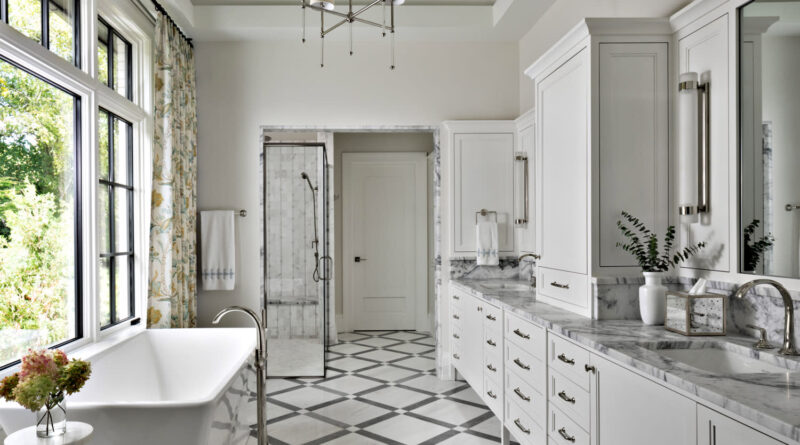Modern vs. Traditional Bathroom Styles: Which One is Right for You?
When planning a bathroom renovation, one of the first questions homeowners face is: Should I go modern or stick with a traditional style? Bathrooms are no longer just functional spaces; they have become sanctuaries where comfort, design, and technology converge. Choosing between modern and traditional designs is about more than aesthetics—it also impacts how you use the space every day.
In this blog, we’ll dive deep into the defining features of modern and traditional bathroom styles, compare their pros and cons, and help you decide which direction to take for your next bathroom transformation.
Understanding Modern Bathroom Styles
Modern bathrooms are all about sleek minimalism and functionality. This style has evolved over the past few decades to embrace clean lines, clutter-free surfaces, and a strong focus on innovation.
Key Characteristics of Modern Bathrooms:
- Minimalist Design: A less-is-more philosophy dominates, with open layouts and seamless transitions.
- Neutral Color Palettes: Whites, grays, blacks, and earthy tones are common, often accented with metallic finishes.
- Innovative Fixtures: Wall-mounted vanities, floating toilets, and rimless showers reflect cutting-edge design.
- Technology Integration: Think heated floors, sensor-based lighting, and even voice-controlled mirrors.
- Sustainable Elements: Eco-friendly materials and water-saving fixtures align with modern values.
A modern bathroom feels like a spa retreat—streamlined, elegant, and designed for convenience. With the growing popularity of Smart Bathrooms Renovation projects, this style continues to dominate in homes where technology is embraced.
Understanding Traditional Bathroom Styles
Traditional bathrooms, on the other hand, celebrate timeless charm and elegance. They often draw inspiration from classical European designs and emphasize warmth, detail, and craftsmanship.
Key Characteristics of Traditional Bathrooms:
- Rich Materials: Marble, granite, and high-quality wood cabinetry are staples.
- Intricate Details: Molding, paneling, and decorative trims are common.
- Warm Color Palettes: Creams, beiges, and pastels create a welcoming feel.
- Classic Fixtures: Pedestal sinks, clawfoot tubs, and polished chrome faucets define the style.
- Symmetry and Balance: The design emphasizes harmony and traditional proportions.
A traditional bathroom feels cozy, luxurious, and familiar. It’s often the go-to choice for homeowners who want their spaces to reflect heritage, comfort, and timeless appeal.
The Pros and Cons of Modern Bathrooms
Pros:
- Easy to clean due to minimalistic design.
- Space-saving features work well for smaller bathrooms.
- Technological upgrades add convenience.
- Neutral design works with evolving home styles.
Cons:
- Can feel cold or sterile if not accessorized well.
- Technology-driven fixtures can be expensive to maintain.
- May lack the warmth and character some homeowners crave.
The Pros and Cons of Traditional Bathrooms
Pros:
- Creates a warm, inviting atmosphere.
- Features timeless designs that rarely go out of style.
- Works beautifully in larger bathrooms with space for detail.
- Adds a sense of luxury and permanence.
Cons:
- May feel outdated in highly contemporary homes.
- Requires more upkeep due to ornate details and natural materials.
- Can be less space-efficient compared to modern designs.
How to Decide: Modern vs. Traditional
When weighing modern versus traditional bathroom styles, consider the following factors:
- Your Home’s Overall Aesthetic
A traditional-style bathroom might feel out of place in a minimalist loft, while a modern bathroom might clash with a Victorian-style home. - Your Lifestyle Needs
- If you value tech integration and easy maintenance, modern bathrooms may suit you best.
- If you prefer comfort and timeless elegance, traditional designs might be the way to go.
- Budget Considerations
Traditional bathrooms often require costly materials like marble and custom woodwork. Modern bathrooms, while also potentially expensive (especially with smart tech), can be designed more cost-effectively with synthetic materials. - Longevity of Design
Ask yourself: do you want a trendy, sleek bathroom now, or a classic design that will stand the test of time?
Mixing Modern and Traditional Elements
Some homeowners find that a blend of both styles works best. For example:
- Pair a clawfoot tub (traditional) with frameless glass shower doors (modern).
- Use ornate mirrors above sleek floating vanities.
- Combine warm wood cabinetry with minimalist chrome fixtures.
This “transitional” style allows you to enjoy the best of both worlds without committing fully to one.
Tips for a Successful Bathroom Renovation
- Plan the Layout Carefully
Whether modern or traditional, function should come first. Optimize space for storage, accessibility, and comfort. - Choose Durable Materials
Bathrooms experience constant humidity and wear. High-quality materials ensure longevity regardless of style. - Hire the Right Professionals
Finding the right contractor for bathroom renovation is essential. They’ll help bring your vision to life, avoid costly mistakes, and ensure your project stays on schedule. - Budget for the Unexpected
Hidden plumbing issues or material shortages can impact timelines. Always allocate an extra 10–15% in your budget. - Think Long-Term
Trends come and go, but your bathroom should serve you for years. Choose a style that reflects both your current and future needs.
Final Thoughts
Modern and traditional bathrooms each offer unique advantages. Modern designs lean toward efficiency, technology, and simplicity, while traditional styles highlight warmth, detail, and timeless beauty. The choice comes down to your personal taste, your home’s architecture, and your lifestyle.
Whether you go all-in on sleek modern minimalism or embrace classic traditional elegance, a well-planned bathroom renovation can elevate your home’s comfort, value, and appeal. And with professional guidance, you can ensure your dream bathroom strikes the perfect balance between style and practicality.




